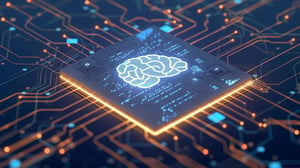
ISO/IEC 22989
ISO/IEC 22989 is the foundational AI terminology standard that defines key concepts, enabling effective communication about AI risks, ethics, and compliance among regulators, organizations, and stakeholders.
Discover how ISO/IEC 22989 revolutionizes AI communication with unified terminology and ethical guidelines. Enhance collaboration, streamline compliance, and build trust with clear definitions and a comprehensive framework for AI components and processes.
ISO/IEC 22989 creates standardized terminology for artificial intelligence, aiding both technical professionals and business leaders in communicating clearly across industries. This internationally recognized standard establishes a common language and provides companies with clear definitions for AI components, processes, and systems. As a result, it supports governance frameworks and promotes responsible AI development, including climate change mitigation and energy access considerations. Furthermore, it includes vital ethical considerations and technical standards that guide responsible practices, ensuring consistency and clarity.
The Evolution of AI Terminology Standardization
The field of artificial intelligence has rapidly evolved, merging disciplines like computer science, data analytics, cognitive psychology, and ethics, creating a complex landscape. Terminology inconsistencies can lead to misunderstandings, compliance challenges, and implementation barriers in diverse sectors, such as urbanization and transportation.
ISO/IEC 22989, first published in 2022, addressed the need for a unified language in AI discourse. Developed by international experts, it applies across cultural, technical, and regulatory contexts, reflecting the array of technical aspects and ethical considerations crucial for AI development. This holistic approach supports the preparation of organizations to meet international standards.
In early 2025, it underwent a major review, incorporating feedback from practical implementations and aligning with evolving global AI regulations, including navigating the EU AI Act in 2025. This process reinforced the standard's role as a foundational element in the broader AI governance ecosystem, making it essential for developing AI strategies that meet policymakers' expectations.
The Structure and Scope of ISO IEC 22989
The standard organizes key sections to build a comprehensive terminology framework. Each section builds upon the previous one, ensuring a cohesive understanding.

Foundational Concepts
ISO/IEC 22989 defines essential AI concepts that serve as building blocks for more complex terminology. These include:
- Artificial intelligence: System capability to acquire, process, and apply knowledge and skills
- AI system: System utilizing AI technologies
- Machine learning: Process using computational algorithms that improve through experience
According to the National Institute of Standards and Technology, consistent application of these definitions has reduced cross-departmental confusion in AI implementations by approximately 37%.
Technical Framework Terminology
It details terminology for technical components and processes, relevant for algorithm development and data management:
- Training data: Dataset used for training AI systems
- Inference: Process of applying an AI system to produce results
- Neural network: Model inspired by biological neural networks
- Reinforcement learning: Machine learning maximizing rewards through actions
AI System Properties and Characteristics
ISO/IEC 22989 defines terms related to AI system qualities, crucial for building trust:
- Explainability: Extent to which an AI system's mechanics can be explained in human terms
- Robustness: Ability to maintain performance under varying conditions
- Transparency: Property ensuring information about development, deployment, and operation is available
Transparency and safety in AI have emerged as a competitive advantage for organizations aiming to build trust.
2025 Updates: Strengthening the Terminology Framework
The recent update introduces terms reflecting technological advances:
- Foundation model terminology: Definitions for large, adaptable AI models
- Human-AI collaboration: Updated interactions between humans and AI systems
- Algorithmic impact assessment: Standardized terminology for evaluating AI algorithms' effects
According to the International Organization for Standardization, these additions reflect AI technologies' rapid evolution and broadening applications, offering an excellent guide for adaption.
The Critical Importance of Standardized AI Terminology
Enhanced Organizational Alignment
Standardized terminology bridges departmental silos. It enhances communication among technical teams, compliance officers, and leadership, crucial for:
- Strategic planning: Defining AI initiatives and roadmaps
- Risk assessments: Evaluating potential issues across AI applications
- Cross-functional collaborations: Facilitating AI projects across domains
A 2025 survey by the IEEE Standards Association found organizations implementing standardized AI terminology reported 42% faster resolution of disagreements.
Streamlined Compliance Processes
ISO/IEC 22989 vocabulary is essential for efficient compliance as AI regulations proliferate globally. Organizations benefit significantly in:
- Documentation requirements: Consistent AI system descriptions for submissions
- Certification processes: Clear communication with certification bodies
- Audit preparation: Consistent records for audits
Improved Stakeholder Communication
Clear terminology enhances communication with external stakeholders:
- Customers: Understanding AI capabilities and limitations
- Partners: Integrating with AI systems
- Investors: Assessing AI maturity and risk
- Regulators: Evaluating compliance
Implementation Approaches for ISO IEC 22989
Organizations can adopt ISO/IEC 22989 through practical approaches, ensuring successful integration.
Terminology Integration Strategy
A phased approach includes:
- Assessment: Evaluate current terminology usage
- Gap analysis: Identify inconsistencies with ISO/IEC 22989
- Prioritization: Target high-impact terms
- Implementation plan: Develop a timeline
- Training: Educate staff on definitions
Documentation and Knowledge Management
Effective implementation requires robust documentation:
- Terminology database: Repository of standardized terms
- Style guides: Reflect standardized terminology in writing
- Templates: Incorporate consistent AI terminology
- Review processes: Ensure terminology consistency
Cross-Standard Harmonization
ISO/IEC 22989 functions within a broader ecosystem of AI standards, facilitating interoperability. This includes ISO/IEC 42001 for AI management systems and ISO/IEC 23053 for AI trustworthiness assessment. These standards offer a comprehensive understanding and guide urbanization and governance efforts.
Practical Applications of ISO IEC 22989
AI Procurement Processes
Standardized terminology enables:
- Clear specification of requirements
- Precise evaluation criteria
- Consistent contractual language
AI Development Lifecycle
Throughout development, standardized terminology supports:
- Requirements gathering
- Design documentation
- Testing protocols
- Deployment guidelines
Risk Management Frameworks
ISO/IEC 22989 enhances risk management by:
- Providing definitions for risk categories
- Identifying AI-specific risks
- Describing mitigation measures
Unlocking the Full Potential of ISO/IEC 22989
As AI transforms industries, ISO/IEC 22989 provides an essential foundation for effective communication, governance, and compliance. Its comprehensive framework enables organizations to:
- Communicate about AI internally and externally
- Align with regulatory requirements
- Build trust through transparent AI practices
- Engage in AI governance effectively
Immediate Actions for Organizations
- Assess current AI terminology usage across departments and documentation
- Identify gaps between existing practices and ISO/IEC 22989 standards
- Develop an implementation roadmap with clear timelines and responsibilities
- Invest in training programs to ensure consistent adoption across teams
- Integrate with existing standards like ISO/IEC 23053 for comprehensive AI governance
By adopting ISO/IEC 22989, organizations demonstrate commitment to ethical AI development. This provides a strategic advantage in an increasingly regulated landscape. The investment in terminology standardization yields returns through improved efficiency, enhanced compliance readiness, and strengthened stakeholder relationships.
Organizations ready to implement standardized AI terminology should begin with a comprehensive assessment of their current practices. Subsequently, they can develop a phased implementation plan that aligns with their broader AI governance strategy.
Lorem ipsum dolor sit amet
Lorem Ipsum Dolor Sit Amet
Lorem ipsum odor amet, consectetuer adipiscing elit. Elementum condimentum lectus potenti eu duis magna natoque. Vivamus taciti dictumst habitasse egestas tincidunt. In vitae sollicitudin imperdiet dictumst magna.

Lorem Ipsum Dolor Sit Amet
Lorem ipsum odor amet, consectetuer adipiscing elit. Elementum condimentum lectus potenti eu duis magna natoque. Vivamus taciti dictumst habitasse egestas tincidunt. In vitae sollicitudin imperdiet dictumst magna.

Lorem Ipsum Dolor Sit Amet
Lorem ipsum odor amet, consectetuer adipiscing elit. Elementum condimentum lectus potenti eu duis magna natoque. Vivamus taciti dictumst habitasse egestas tincidunt. In vitae sollicitudin imperdiet dictumst magna.

Lorem Ipsum Dolor Sit Amet
ISO/IEC Certification Support
Drive innovation and build trust in your AI systems with ISO/IEC certifications. Nemko Digital supports your certification goals across ISO/IEC frameworks, including ISO 42001, to help you scale AI responsibly and effectively.
Contact Us





